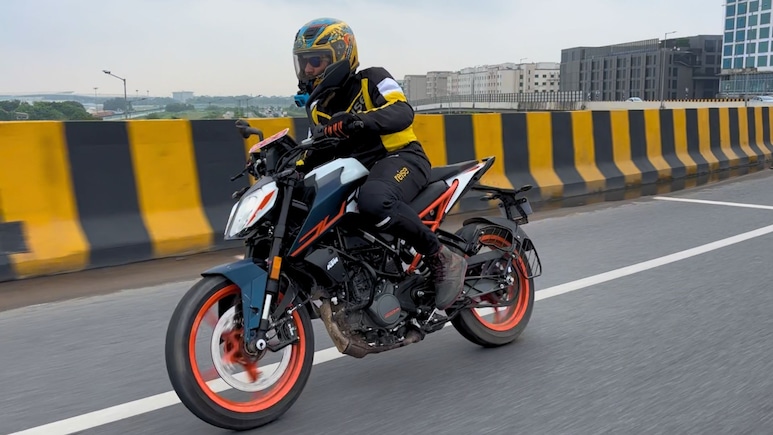
The smallest KTM will have a heavy workload. At the outset, a few things work in favour of the KTM 160 Duke. It appears reasonably handsome and rides with intent. It will have a task cut out against a premium asking price, competitive market and tall expectations. There is plenty that needs to go in favour of the 160 Duke to appeal to the youth and enthusiasts alike. Let's dive straight into the review:
KTM 160 Duke Design
Familiar. The Duke family has a characteristic design, and the 160 is no different. Sharp and edgy, the shrouds on the tank try to give it a bulk. There is plenty shared with the 200 Duke. Common elements on the skin include a full LED light unit, LED indicators, a 5-inch LCD console, a joystick to go through the menu and a split-seat. The 160 Duke comes across a better-finished product than the 200 Duke. The handlebar grip, paint job, and joints have a better fit and finish.
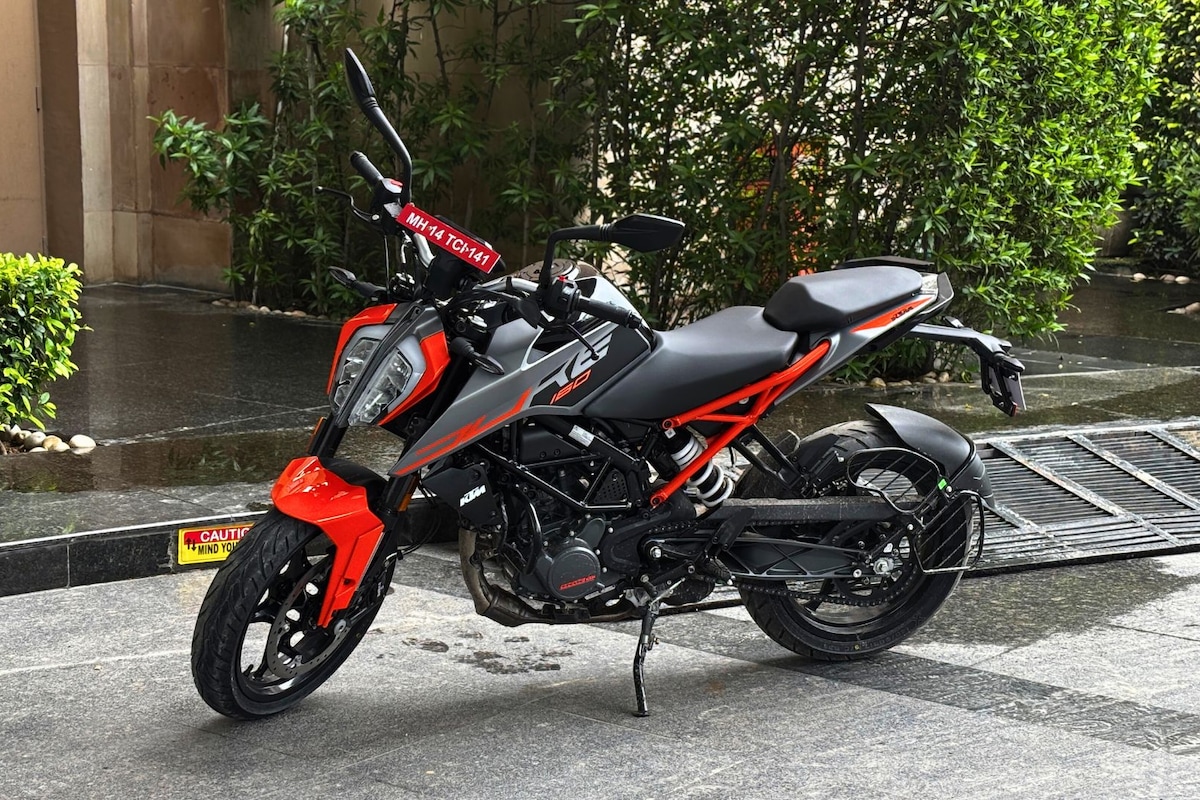
KTM 160 Duke Hardware
The 5-inch cluster looks a bit dated, however, it packs information to the brim. Gear position, fuel gauge, ABS modes, engine heat, speed, tacho, clock, distance to empty, and a whole lot of key parameters needed are legible. ByBre-supplied dual-channel ABS comes as standard, and the rear ABS can be turned off on the fly, when SuperMoto mode is engaged. The front is a 320 mm disc and rear is 240 mm. Much like bigger single-cylinder Dukes, the 160 also uses WP-sourced upside-down front suspension and rear mono-linkage. The engine is a steel trellis frame and ably supported by a steel subframe. It rides on 17-inch radial tyres from MRF with 110/70 front and 140/60 rear sections.
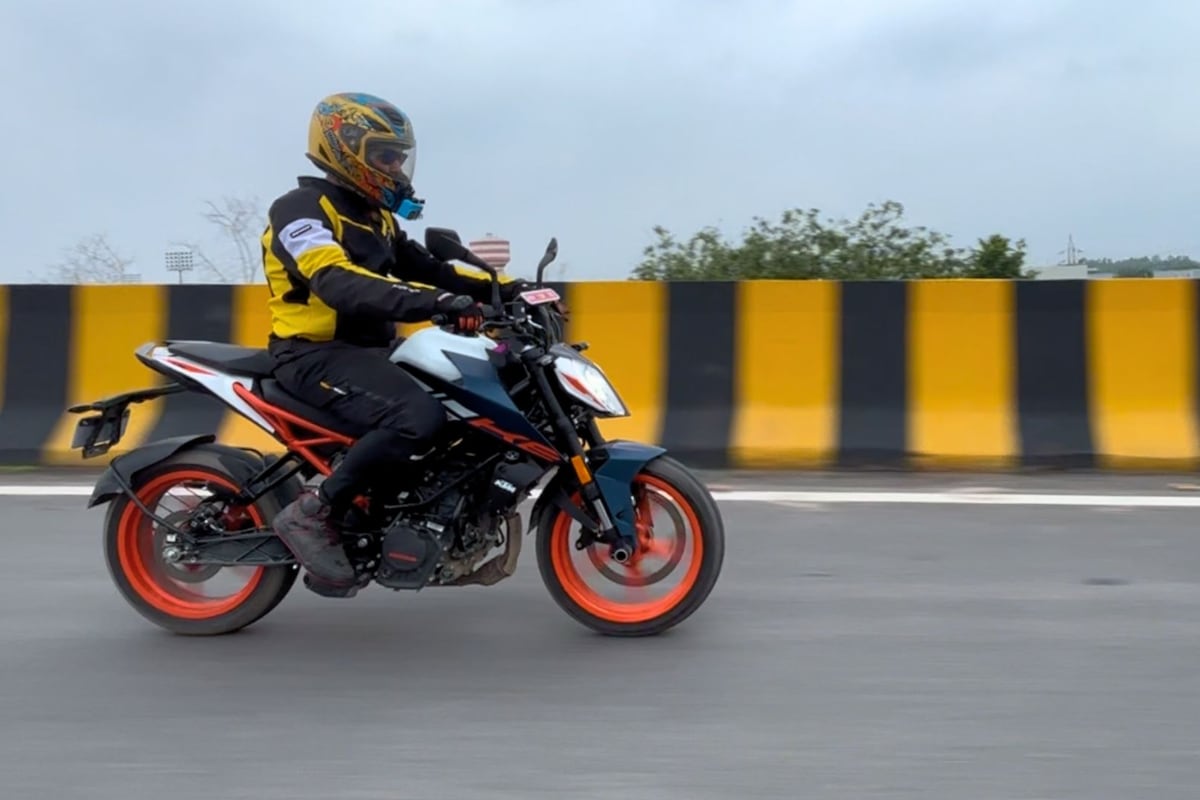
KTM 160 Duke Ergonomics
Swing your leg over the 160 Duke, the stance is upright and sporty. KTM 160 Duke tips scale at 147 kilograms, which is around 9 kilos heavier than the Yamaha MT15. The seat height is manageable at 815 mm. The handlebars are decently wide, and the footpegs rear set. In terms of wheelbase, the 160 Duke measures 1357 mm, which is roughly 33 mm longer than the Yamaha MT15. The seat is nice and spacious. Even a pillion can spend time on the 160 Duke, which is a challenge on Yamaha.
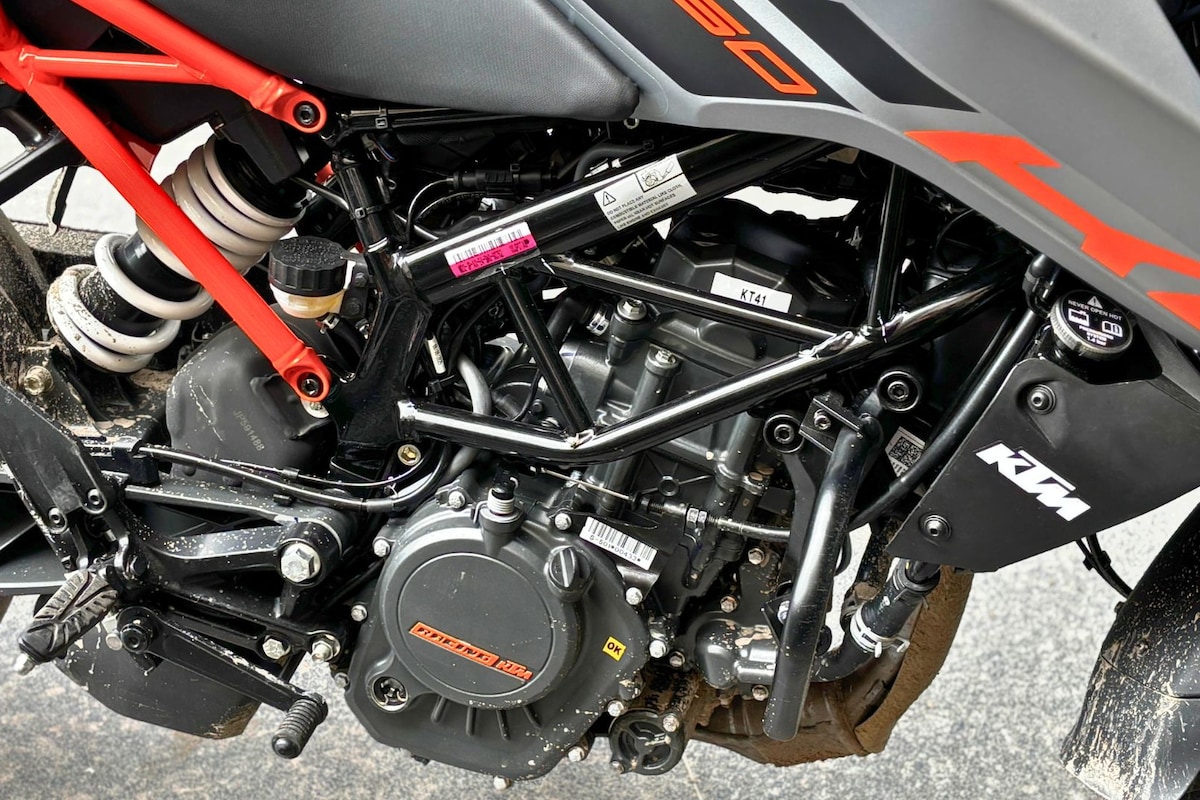
KTM 160 Duke Engine
The 164-cc, single-cylinder, liquid-cooled engine is from the same family as used in the 200 Duke. It's the most powerful 160-cc motorcycle by a distance. The engine is reworked with a different bore and stroke length. The internals are tweaked and overall weighs a kilo less than the 200 Duke's engine. The SOHC mill in 160 Duke generates 19 hp at 9500 rpm and 15.5 Nm at 7500 rpm. It is linked with a 6-speed gearbox and is assisted by a slip-and-assist clutch. The radiator is curved to increase the surface area for more efficient cooling. In comparison, Yamaha MT15's 155-cc engine makes 18.4 hp and 14.5 Nm of peak torque. However, the Yamaha has a better power-to-weight ratio.
ALSO READ | Triumph Thruxton 400 Review; Bringing Back The Café Racer Cool
KTM 160 Duke Performance
Twist the throttle, and it is such a nice feeling. The rider is greeted with a mellow growl of the exhaust. The mid-range performance is more than handy, and KTM says 80 per cent of torque is available under 4,000 rpm. We could put the claims to the test during our city runabout, but KTM says the 160 Duke has faster 3rd and 4th gear roll-on acceleration timing over the Yamaha MT15.
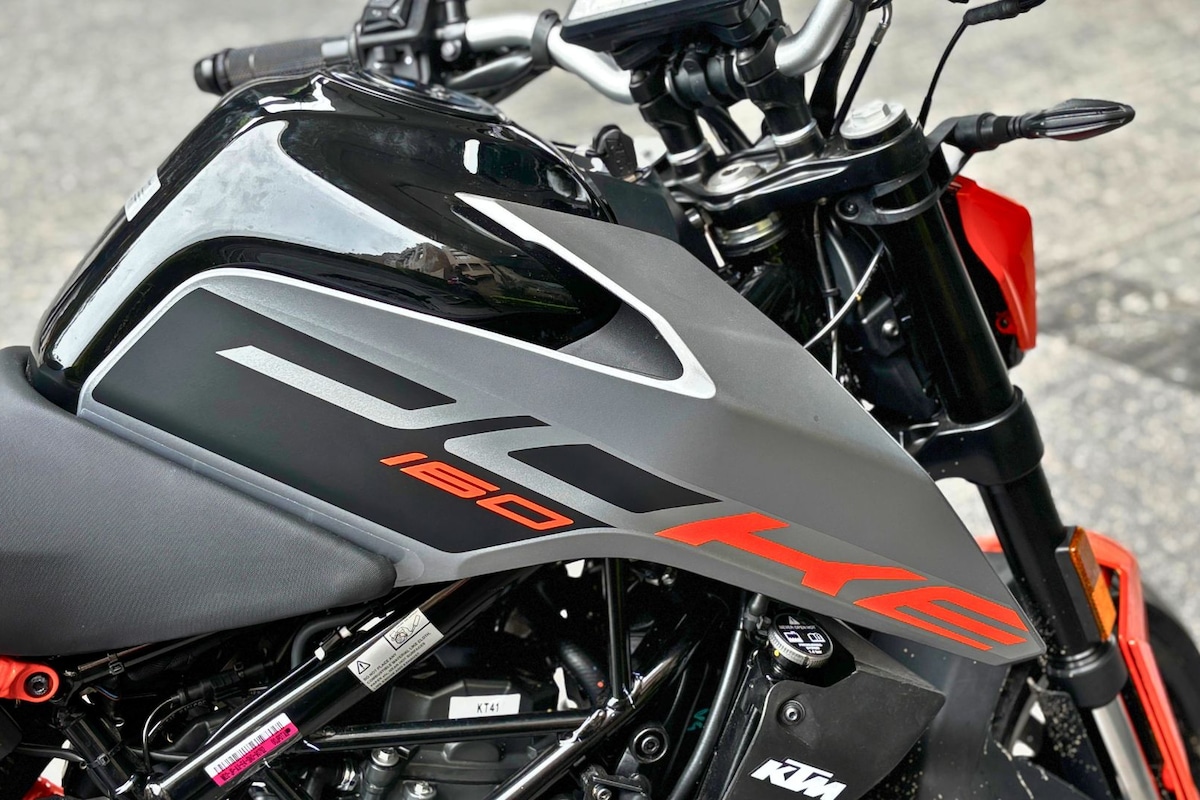
In terms of fuel efficiency, the 160 Duke is 10 per cent more efficient than the 200 Duke. KTM conducted internal testing and claims the 160 Duke returned a fuel efficiency of 40 kmpl. The ARAI-certified economy number is still awaited.
The clutch is very light, and the gear shifts are smooth. The acceleration is quick, and speeds of 40-60 kmph kick in briskly. The sweet spot lies around 80 kmph. The 160 Duke can do speeds of over 100 kmph easily but long hours at triple digits may feel a push for the engine. The engine is largely refined and smooth in the mid-range, and it is over around 7,000 rpm when vibrations tend to appear on the pegs, bars and tank.
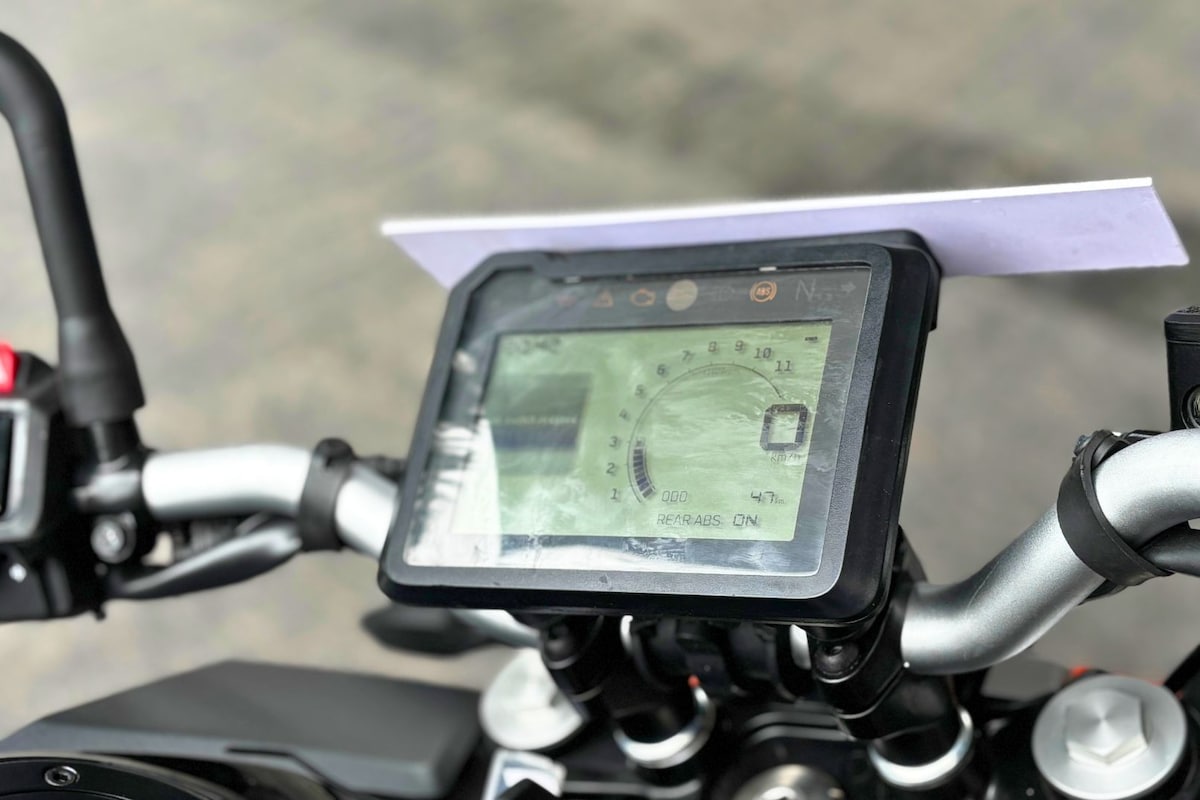
KTM 160 Duke Ride Dynamics
The 160 Duke is fun in the cities. Filtering through tight spaces in the cities comes naturally to the smallest KTM. The handling is sharp, which, coupled with the steel trellis frame and a tight geometry, feels agile. The 160 Duke holds its line on sweeping curves beautifully, and that is aided by an evenly distributed mass. The front brake feels sharp and progressive with decent feedback on the lever. The rear, like many of the single-cylinder KTMs, lacks sufficient bite. Dual-channel ASB with superMoto mode comes as standard with the 160 Duke.
There is a bit of an anomaly. The brochure reads WP-Apex suspension; however, the test units had Endurance units. Nevertheless, the suspension tuning is slightly on the firmer side, and that makes life on the bike juddering over uneven roads. However, the firmer setting also allows the KTM to be as sharp and flickable, it is known to be.
ALSO READ | 2025 TVS Apache RTR 310 Review: Better Than Before
KTM 160 Duke Verdict
KTM 160 Duke will have a lot of takers. At 1.85 lakh (ex-showroom), the 160 Duke is roughly Rs 5,000 dearer than the MT15's top-end variant, and closely priced with the higher-capacity Hero Xtreme 250R and Bajaj Pulsar NS400. There may be a few areas of concern, although it delivers on the promise of thrill. The performance may not be as raw as 200 Duke, yet make no mistake, the 160 is a seriously fun, fast, and sharp motorcycle. Customers having more choices is always a good sign.
Track Latest News Live on NDTV.com and get news updates from India and around the world
